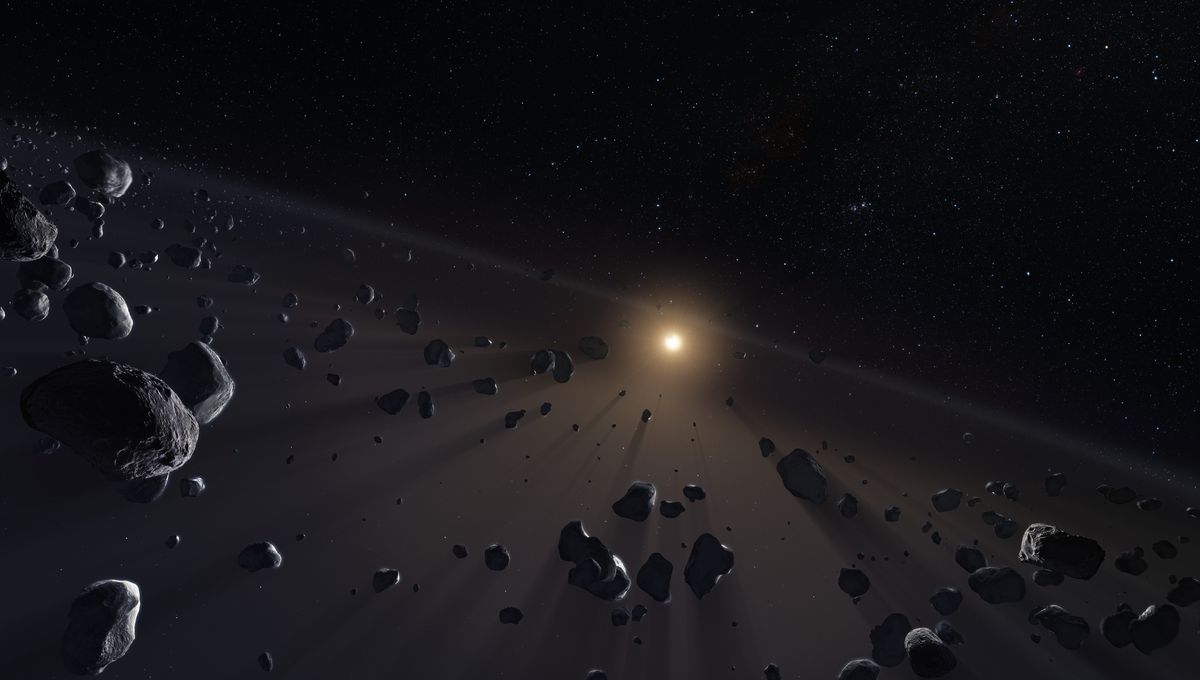
Beyond the orbits of the eight planets in our Solar System, several distant objects make up the Kuiper Belt. The extent of this region has been estimated based on the discovery of such objects – but new observations are implying that it goes further out than previously thought.
NASA’s New Horizons spacecraft visited the most famous Kuiper Belt Object (KBO), the dwarf planet Pluto. It then flew by a small KBO called Arrokoth, and is now traveling across the belt. One of its instruments, the Venetia Burney Student Dust Counter (SDC), measures levels of dust as the spacecraft travels.
Named after the person that named Pluto, the SDC was expected to see a drop in the amount of dust it picked up. The dust comes from collisions between KBOs, asteroids, and comets, as well as KBOs’ bombardment from interstellar dust. Observations from Earth consider the belt to extend to 50 times the distance between Earth and the Sun (or one Astronomical Unit, AU).
But New Horizons is at 55 AU, and it is still going strong.
The team’s analysis suggests that the belt might go all the way to 80 AU or maybe even further, implying that KBOs might also extend further. If that is indeed the case, there are many undiscovered objects in the Kuiper Belt.
“New Horizons is making the first direct measurements of interplanetary dust far beyond Neptune and Pluto, so every observation could lead to a discovery,” lead author of the new study Alex Doner from the University of Colorado Boulder, who serves as SDC lead, said in a statement. “The idea that we might have detected an extended Kuiper Belt — with a whole new population of objects colliding and producing more dust – offers another clue in solving the mysteries of the solar system’s most distant regions.”
The team is not discounting alternatives – maybe the dust is being pushed by sunlight to more distant regions of the solar system, messing with the expected measurements. Or maybe New Horizons has encountered short-lived ice that is adding a temporary extra amount of dust when only little is present. It’s possible, but given the difficulties of finding KBOs, it’s not surprising that we have not found a large population of them.
“These new scientific results from New Horizons may be the first time that any spacecraft has discovered a new population of bodies in our solar system,” said Alan Stern, New Horizons principal investigator from the Southwest Research Institute in Boulder. “I can’t wait to see how much farther out these elevated Kuiper Belt dust levels go.”
The results are published in The Astrophysical Journal Letters.
Source Link: The Belt At The Edge Of The Solar System Is Larger Than We Thought